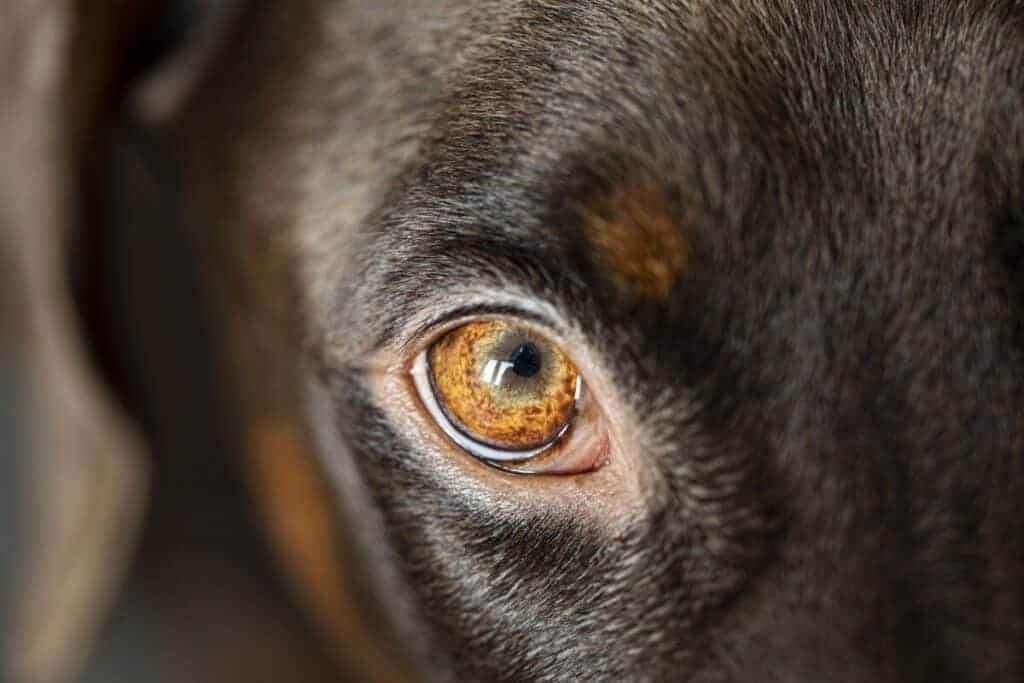Dog owners everywhere know the heartwarming feeling when a dog lays his head on you, whether it is your lap or shoulder. But is your dog demonstrating an act of love and affection, or is he trying to communicate something deeper? This article takes a look at why your dog might lay his head on you.
Experts indicate that a dog’s affection typically stems from its biological pack instinct. Affectionate behavior, like a dog laying its head on its owner, is often considered by animal behaviorists to symbolize a connection to their pack leader and can be seen as a way of feeling comfortable or at ease.
Your dog may be resting their head on you as its source of comfort, but what else might your dog be attempting to communicate by nuzzling up? Let’s look at a few possibilities—or causes for concern—to watch for. Keep reading to learn more about why your dog lays his head on you.
Contents
What Does It Mean When a Dog Lays their Head On You
Animals in the wild connect to their packs not just for socialization and enjoyment but for safety in numbers. They communicate with their group as a way to keep them safe from predators, to hunt effectively, and to protect their young. Domestic animals, including dogs, no longer have the need to roam the wild in dedicated packs, but the biological instinct can be difficult to shake.
Additionally, pack instinct is the reason your dog wants to sleep in the bed with you. In the wild, dogs will sleep very close to their pack for warmth and security, as they are less likely to be attacked by a predator when they are in a group.
So while some owners don’t like their dogs in the bed because of hygienic reasons, it is part of a dog’s instincts to try and sleep in the same area as their owners. Sometimes dogs won’t sleep near you and this can often worry owners, questioning whether something is wrong. but don’t panic as there are many strategic reasons why your dog won’t sleep near you. Check out our article on “Why Does My Dog Sleep In Another Room” for more information on this topic.
Another reason dogs lay their heads on their humans could have to do with eye contact. Soft, relaxed eye contact has been associated with the dog-human bond. Dogs will maintain eye contact with people they trust and with whom they feel comfortable. They will often lay their head on their human to get their attention and facilitate this connection.
As an example, one of the most common times my dog lays his head on me is when he wants his dinner or even to go for a walk. So don’t be fooled every time, as it’s not always affection that your dog is looking for its is often your attention.

Dogs Will Lay Their Head on You When They’re at Ease
Scientific studies have actually shown that dogs feel as bonded to us as we feel to them. Dogs seek out cuddle sessions with their owners for warmth and safety, but hormone level studies have shown that oxytocin (the “bonding chemical” that makes us feel happy and relaxed) is released for dogs when they are in close proximity to their owners.
Additionally, brain scans have been done on dogs to assess mental activity. The parts of the brain associated with happiness and love are activated when dogs see their owners or smell their scent. In fact, scent can be one of the most powerful attractions, as dogs use a huge amount of their brainpower to process smells.
Although the scent is a strong reason why your dog lays his head on you, he may even enjoy sleeping on your clothes or bed for the same reason. We all do it, getting in from work and chucking our clothes on the floor, especially if it’s a Friday. The next thing you know is your dog is sleeping on your favorite work shirt or piece of clothing, this is because used clothing possesses some of the strongest smells. So if you go out, don’t be surprised to find your dog sleeping on your clothes.
The parts of the brain associated with dopamine production (the happiness chemical) light up when dogs think about their owners, which leads neuroscientists to believe that dogs actually feel affection and love similar to humans.
So, your dog doesn’t just like you for food. He loves you for companionship the same way you love him. Interestingly, dogs don’t just cuddle with anybody. They tend to prioritize the people they are closest to and with whom they feel the most bonded. A newly adopted dog, for example, may need extra time to get to know their new owner before they’re ready to show unlimited affection. This also might take longer if a dog was previously bonded with its former owner or if the dog experienced abuse or trauma. It may take time, but eventually, most dogs will start to learn and trust their new owners and environments and will develop the cuddling instinct once again.
Why Is Your Dog Showing Affection
It’s important to analyze your dog’s behavior as it helps to learn what their actions mean. Is your dog cuddling up to you because they are being affectionate or is it something else? As previously discussed dogs often want something from you, this is what eye contact usually indicates. However if your dog is laying their head on you or sleeping by your feet, it may indicate an instinct that comes from the pack mentality.
Dogs in the wild will sleep together not only for strength in numbers but also as an alarm system. By being close to each other if one wakes up and senses danger, the surrounding dogs will be alerted through the woken dog’s movement. Your dog may not be thinking about danger, but they may want to rest their eyes whilst knowing they will be alerted if you move from your position and into the kitchen. There is more information on why dogs sleep at our feet in one of our articles, check it out here. “Why Do Dogs Sleep At Your Feet”.
Your Dog May Be Laying His Head on You Because He’s Stressed
Because of your dog’s pack instinct and a lack of understanding of the human world, it can be stressful for dogs to be left alone at home for extended periods of time. Part of his cuddling up might be a stress response from being left at home without any indication of where his pack has gone.
Most dogs will eventually get used to their owner leaving and returning, but some demonstrate extended or recurring anxiety behaviors about their owner leaving them alone, especially after a change of routine or environment. Dogs see time differently from humans and there are some interesting areas of research regarding the feeling of time passing and how there may be a difference between dogs and humans. Check out our article all about time and how dogs perceive it. Here is the link to the article “How Long Is A Day For A Dog”.
When your dog appears agitated or seems to be attempting to garner your attention out of a need for reassurance, it may indicate that your dog has some separation anxiety or stress about being left alone. We can use animal behavior science to identify why a dog does certain behaviors, and it isn’t always what we would expect.
How to Identify if Your Dog is Stressed or Relaxed
When a dog is stressed, they will often:
- Pace or seem antsy
- Growl or become verbal (barking, whining, “talking”)
- Yawn
- Lick their lips
- Cower or tremble
- Wag their tail quickly or tuck their tail beneath themselves
Inversely, a calm or relaxed dog will:
- Wag their tail slowly or let their tails droop
- Have their ears back and lying against their head
- Demonstrate loose, relaxed posture
- Sleep often, sometimes 12 or more hours per day
Different dogs indicate their feelings in different ways. One dog may pace when he’s nervous, and another may pace when he wants to play. Watching for several indicators at once will provide insight into your dog’s overall mental state.

If Your Dog Doesn’t Show Affection, Does it Mean They Don’t Love You?
Not all dogs are affectionate, but that doesn’t mean they aren’t bonded to their owners or love them just the same. Some breeds are known to be warmer than others (like golden retrievers), whereas some are known to be more distant or less affectionate (bloodhounds, for example).
Dog breeds were domesticated and bred over many generations to do certain jobs, such as herding sheep or assisting with hunting and security tasks, and some were bred for companionship.
These dogs who tend to be more task-oriented may not exhibit the same affectionate, cuddling personality as a smaller “lap dog” who was bred specifically for their smaller stature and docile nature.
Likewise, some dogs tend to get overheated a lot more easily, which will cut down on their comfort level by being in close proximity to their owners.
Overheating makes most dogs uncomfortable, and even the most affectionate dog will want to be physically less close to their pack during the hot summer months.
Keep in mind that if you’re warm, they’re twice as warm because of their hair and decreased capacity to sweat from their skin glands. Giving them space during the summer months will likely assist them in regulating their temperatures and increasing their overall comfort levels.
Conclusion
No two dogs are the same, and every dog communicates a little bit differently. Getting to know your dog and understanding their non-verbal language is a key way to bond with your pet and keep him happy and healthy for life. We obviously can’t speak their language, so watching for key indicators will allow you to identify their motivations behind stressful or relaxed behaviors.
Most dogs will lay their heads on their owners as a sign of love and affection, but being mindful of the potential stressors and other factors will help you to adjust the environment for your animal to keep him as safe and happy as possible.
If you enjoyed this post check out our homepage for more interesting topics all about dogs and the wonderful lives we share with them.

